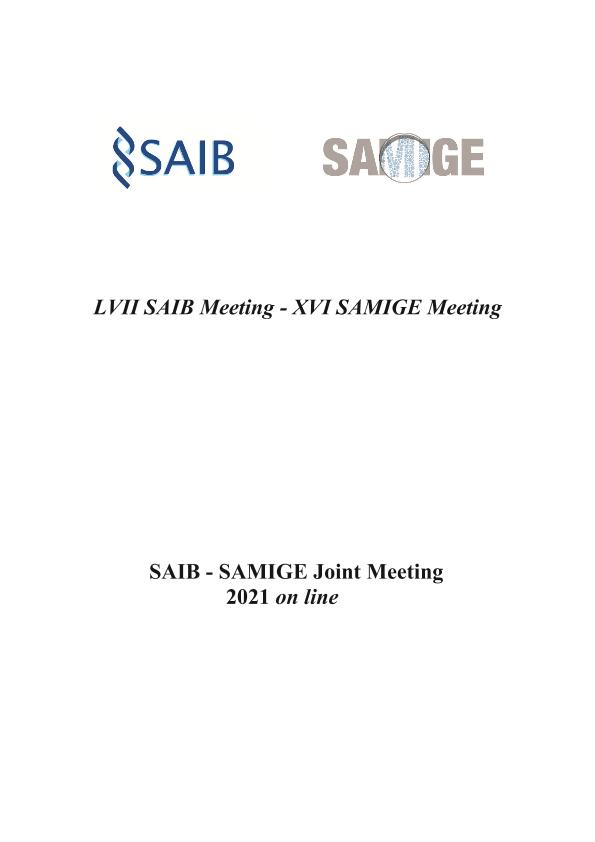Mostrar el registro sencillo del ítem
dc.contributor.author
Scodelaro Bilbao, Paola Gabriela

dc.contributor.author
Almeyda, María Delfina

dc.contributor.author
Bolletta, Micaela

dc.contributor.author
Leonardi, Patricia Ines

dc.date.available
2022-11-10T01:49:36Z
dc.date.issued
2021
dc.identifier.citation
Co-cultivation of haematococcus pluvialis and chlorella sp. as a novel strategy for microalgal-bases biotechnology; LVII SAIB Meeting; XVI SAMIGE Meeting; Online; Argentina; 2021; 1-1
dc.identifier.issn
0327-9545
dc.identifier.uri
http://hdl.handle.net/11336/177175
dc.description.abstract
Microalgae have been identified as potential sources of valuable products with many commercial applications including food supplements, feed additives and biofuel feedstocks. They are innovative production platforms since, in order to adapt to growth conditions, they synthesize various metabolites. However, the synthesis of these biomolecules requires an adequate selection of microalgal species, a deep knowledge of their biology and physiology, as well as rigorous evaluation of cultivation strategies. Monocultures have been the preferred production route in the bio-industry. Nevertheless, from a biotechnological perspective, it is necessary to develop successful cultivation technologies to increase their productivity, in terms of biomass and availability of biomolecules. In this way, there is increasing interest in the use of co-cultures to deal with contamination issues, and simultaneously increase productivity and product diversity. Thus, in this work our purpose was to analyze co-cultivations of two different microalgal strains in terms of biomass production and product availability. For this end, Haematococcus pluvialis and Chlorella sp., two important carotenoid producers, were selected for co-cultivations in an appropriate culture medium at 22oC for 10 days. Then, cell number, dry weight, chlorophyll and carotenoid quantification and autofluorescence, Red Nile (RN) fluorescence, and triacylglyceride (TAG) and sterol contents were analyzed. The results revealed that co-cultivation based on 50% H. pluvialis and 50% Chlorella sp. prevented population domination of one strain over the other. In addition, this co-cultivation condition showed the highest values in terms of cell density and dry weight. Flow cytometry analyses also shown the maximum RN fluorescence and carotenoid autofluorescence within this experimental condition. In addition, in co-cultures based on 50% H. pluvialis and 50% Chlorella sp., carotenoid autofluorescence was accompanied by the greatest increase in the antioxidant capacity and in the amount of total carotenoids. Moreover, thin layer chromatography coupled to spectrophotometric quantification also showed highest TAG and sterol contents. The results suggest that the co-cultivation system based on 50% H. pluvialis and 50% Chlorella sp. may be a successful strategy to enhance biomass yield and the obtention of value-added products, supporting the development of a microalgal-based biotechnological process.
dc.format
application/pdf
dc.language.iso
eng
dc.publisher
Sociedad Argentina de Investigación Bioquímica y Biología Molecular
dc.rights
info:eu-repo/semantics/openAccess
dc.rights.uri
https://creativecommons.org/licenses/by-nc-sa/2.5/ar/
dc.subject
Clorophyta
dc.subject
Coculture
dc.subject
Biomass
dc.subject
Lipid
dc.subject.classification
Otros Tópicos Biológicos

dc.subject.classification
Ciencias Biológicas

dc.subject.classification
CIENCIAS NATURALES Y EXACTAS

dc.title
Co-cultivation of haematococcus pluvialis and chlorella sp. as a novel strategy for microalgal-bases biotechnology
dc.type
info:eu-repo/semantics/publishedVersion
dc.type
info:eu-repo/semantics/conferenceObject
dc.type
info:ar-repo/semantics/documento de conferencia
dc.date.updated
2022-11-01T22:07:48Z
dc.journal.pagination
1-1
dc.journal.pais
Argentina

dc.journal.ciudad
Mendoza
dc.description.fil
Fil: Scodelaro Bilbao, Paola Gabriela. Consejo Nacional de Investigaciones Científicas y Técnicas. Centro Científico Tecnológico Conicet - Bahía Blanca. Centro de Recursos Naturales Renovables de la Zona Semiárida. Universidad Nacional del Sur. Centro de Recursos Naturales Renovables de la Zona Semiárida; Argentina. Universidad Nacional del Sur. Departamento de Biología, Bioquímica y Farmacia; Argentina
dc.description.fil
Fil: Almeyda, María Delfina. Consejo Nacional de Investigaciones Científicas y Técnicas. Centro Científico Tecnológico Conicet - Bahía Blanca. Centro de Recursos Naturales Renovables de la Zona Semiárida. Universidad Nacional del Sur. Centro de Recursos Naturales Renovables de la Zona Semiárida; Argentina. Universidad Nacional del Sur. Departamento de Biología, Bioquímica y Farmacia; Argentina
dc.description.fil
Fil: Bolletta, Micaela. Universidad Nacional del Sur. Departamento de Biología, Bioquímica y Farmacia; Argentina
dc.description.fil
Fil: Leonardi, Patricia Ines. Consejo Nacional de Investigaciones Científicas y Técnicas. Centro Científico Tecnológico Conicet - Bahía Blanca. Centro de Recursos Naturales Renovables de la Zona Semiárida. Universidad Nacional del Sur. Centro de Recursos Naturales Renovables de la Zona Semiárida; Argentina. Universidad Nacional del Sur. Departamento de Biología, Bioquímica y Farmacia; Argentina
dc.relation.alternativeid
info:eu-repo/semantics/altIdentifier/url/https://congresos.g2consultora.com/wp-content/uploads/2021/10/Biocell-Preprint-SAIB-SAMIGE-2021.pdf
dc.conicet.rol
Autor

dc.conicet.rol
Autor

dc.conicet.rol
Autor

dc.conicet.rol
Autor

dc.coverage
Internacional
dc.type.subtype
Reunión
dc.description.nombreEvento
LVII SAIB Meeting; XVI SAMIGE Meeting
dc.date.evento
2021-11-01
dc.description.ciudadEvento
Online
dc.description.paisEvento
Argentina

dc.type.publicacion
Journal
dc.description.institucionOrganizadora
Sociedad Argentina de Investigación en Bioquímica y Biología Molecular
dc.source.revista
Biocell

dc.date.eventoHasta
2021-11-05
dc.type
Reunión
Archivos asociados
